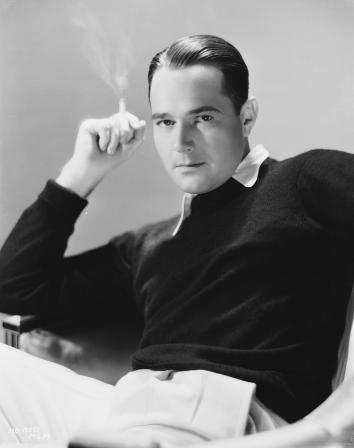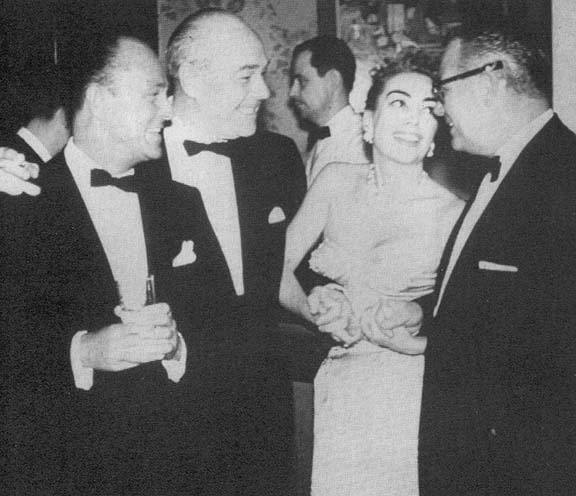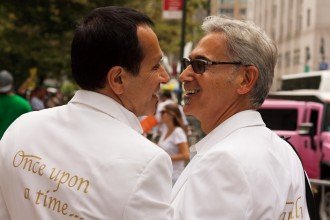
In today’s age, when the news of celebrities coming out is celebrated on the cover of magazines, it’s hard to imagine there was a time when coming out was a scandal. The risks of one’s true sexual identity being known were so great that movie studios would pressure actors and actresses into so-called “lavender marriages”. These sham marriages were meant to cover up an actor’s true sexual preferences and preserve the public’s perception of the actors.
Lavender marriages were the union of two gay stars or one gay star and another willing – or simply naive – partner. The arrangements were used as a way for studio’s to cover up the sexual orientation of stars either to avoid violations of morality clauses from the Hayes Act or simply to keep the reputations of their stars in good standing with the public. Morality clauses in studio contracts also allowed the studios to withhold an actors’ salary “if they forfeit the respect of the public.” These clauses were broad and wide reaching. Offenses could stem from behaviors ranging from legitimate criminal activity to mere association with any conduct that was considered indecent or unsettling to the community. Many notable actors such as Rudolph Valentino, Cary Grant and Rock Hudson entered lavender marriages in order to preserve their reputations and careers. But not everyone was willing to compromise their sexual identity to sell more movie tickets.

It was into this environment William Haines found himself with a decision to make.
William “Billy” Haines began his career picking up small roles, often uncredited, in the early 1920s. In 1923 he landed a role in the film Three Wise Fools. Haines later said he felt his performance in the film was “terrible” because he had been distracted by the top hat he wore for the movie. Nevertheless, the film received positive reviews and Haines was offered a number of film roles after its release.
Ultimately, Haines was contracted with MGM studios for much of the 1920s and 1930s, and had more than 50 movie credits to his name. He was one of the few actors able to maintain a successful career during the transition of silent films to movies with sound. In 1933, Haines was arrested at a local YMCA with a sailor he had picked up. Jimmy Shields was a former sailor and had met Haines in New York in 1926. Haines convinced Shields to move to California with him and the two had been in a relationship and living together since the mid 20s. The arrest brought his sexuality to light as well as his long-term relationship with Jimmy Shields.
Billy was presented with a choice from his studio – either enter a lavender marriage aimed to deceive the general public of his sexual preference or be dropped by the studio. Billy chose love and ultimately left the movie industry all together.
Even after leaving Hollywood, their relationship was not without challenges. In 1936, they were attacked by members of the Klu Klux Klan. The two were dragged out of their home and beaten due to false accusations of child molestation. The claims against the couple were dismissed due to a lack of evidence. Although the crime was widely publicized, no arrests were ever made in the assault. The relationship also survived Haines’ military service during World War II.

Although he was occasionally offered roles in films, Billy never returned to acting. Billy and Jimmy went on to become very successful interior designers, founding William Haines Designs. Early clients included Joan Crawford and then Governor of California, Ronald Reagan. Joan Crawford was quoted as saying that Billy and Jimmy had “the happiest marriage in Hollywood.” The two enjoyed a 47 year relationship which ended only due to Billy’s death in 1973. Shortly afterward, Jimmy committed suicide. Leaving a note, he indicated that he wished to follow his partner in death rather than face a life without him. The two are interred side by side in Woodlawn Memorial Cemetery in Santa Monica, California.
While his name isn’t as recognizable as other idols of the silver screen or LGBT pioneers, the story of William Haines remains as powerful as ever. More than 40 years after his death, the legacy of William Haines lives on even if his star has faded. The company he and Jimmy built continues to this day with headquarters in Hollywood and showrooms in New York, Denver and Dallas. Haines received a star on the Hollywood Walk of Fame and his story has been adapted into plays and several books. His fate as an actor kept many people from revealing the truth about their sexuality for decades, but his commitment to his convictions – and to his relationship with Jimmy – proves there’s more joy in living openly and honestly instead of hiding in the shadows.




